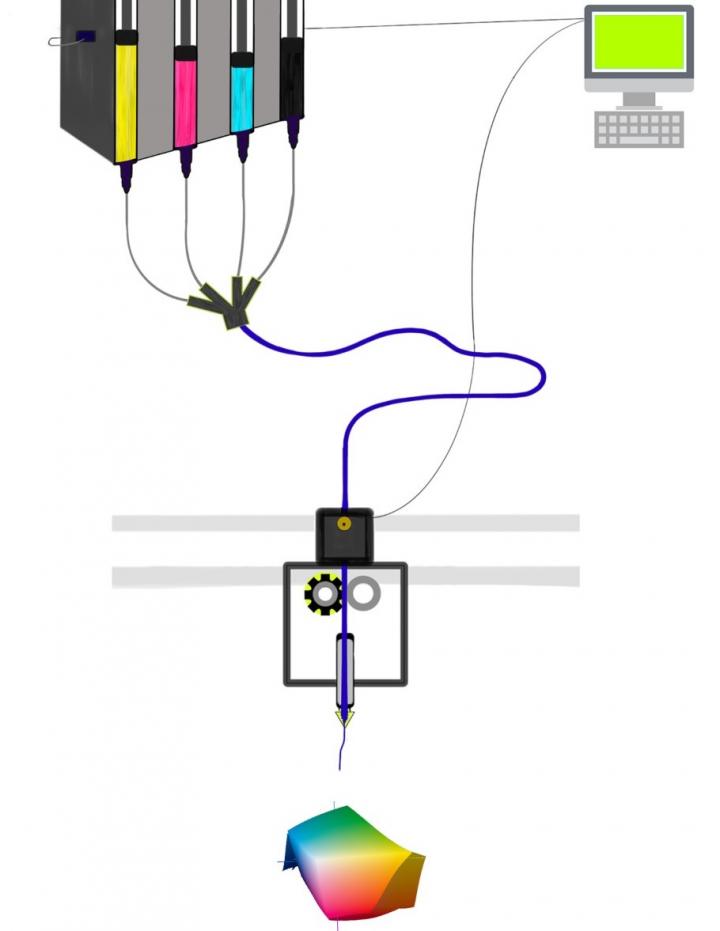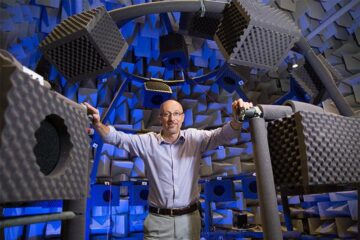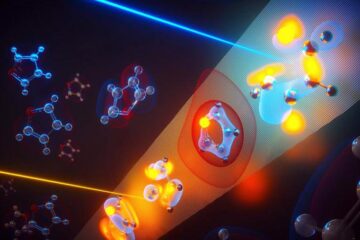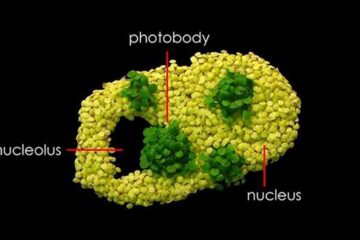Superior 'bio-ink' for 3D printing pioneered

This 3D printing system would print gel scaffolds, or support structures, for growing human tissues. Like traditional printers that rely on four pigments to cover the entire color spectrum, the system would include hyaluronic acid and polyethylene glycol as the basic "ink cartridges" and other cartridges featuring inks with different cells and ligands that serve as binding sites for cells. Credit: Madison Godesky
Rutgers biomedical engineers have developed a “bio-ink” for 3D printed materials that could serve as scaffolds for growing human tissues to repair or replace damaged ones in the body.
The study was published in the journal Biointerphases.
Bioengineered tissues show promise in regenerative, precision and personalized medicine; product development; and basic research, especially with the advent of 3D printing of biomaterials that could serve as scaffolds, or temporary structures to grow tissues.
Hyaluronic acid, a natural molecule found in many tissues throughout the body, has many properties ideal for creating customized scaffolds, but lacks the durability required. The Rutgers engineers use modified versions of hyaluronic acid and polyethylene glycol to form a gel that is strengthened via chemical reactions and would serve as a scaffold.
“Instead of an ink color for an inkjet printer, we want the mixture to have properties that are right for specific cells to multiply, differentiate and remodel the scaffold into the appropriate tissue,” said senior author David I. Shreiber, a professor who chairs the Department of Biomedical Engineering in the School of Engineering at Rutgers University-New Brunswick. “We focus on the stiffness of the gel and scaffold binding sites that cells can latch onto.”
Groups of cells in the body generally make their own support structures, or scaffolds, but scientists can build them from proteins, plastics and other sources, according to the National Institutes of Health.
Shreiber and lead author Madison D. Godesky, who earned a doctorate at Rutgers, envisioned a system where hyaluronic acid and polyethylene glycol serve as the basic “ink cartridges” for 3D printing. The system would also have other ink cartridges featuring different cells and ligands, which serve as binding sites for cells. The system would print gel scaffolds with the right stiffness, cells and ligands, based on the type of tissue desired.
“Both the stiffness and the binding sites provide important signals to cells,” Godesky said. “What especially distinguishes our work from previous studies is the potential to control the stiffness and ligands independently through combinations of inks.”
Media Contact
All latest news from the category: Materials Sciences
Materials management deals with the research, development, manufacturing and processing of raw and industrial materials. Key aspects here are biological and medical issues, which play an increasingly important role in this field.
innovations-report offers in-depth articles related to the development and application of materials and the structure and properties of new materials.
Newest articles

Why getting in touch with our ‘gerbil brain’ could help machines listen better
Macquarie University researchers have debunked a 75-year-old theory about how humans determine where sounds are coming from, and it could unlock the secret to creating a next generation of more…

Attosecond core-level spectroscopy reveals real-time molecular dynamics
Chemical reactions are complex mechanisms. Many different dynamical processes are involved, affecting both the electrons and the nucleus of the present atoms. Very often the strongly coupled electron and nuclear…

Free-forming organelles help plants adapt to climate change
Scientists uncover how plants “see” shades of light, temperature. Plants’ ability to sense light and temperature, and their ability to adapt to climate change, hinges on free-forming structures in their…





















